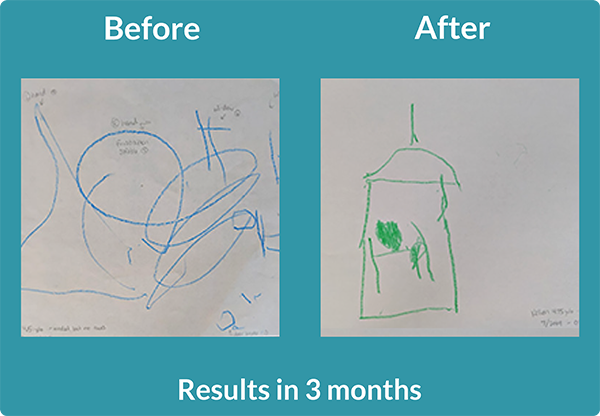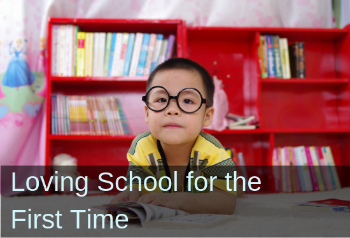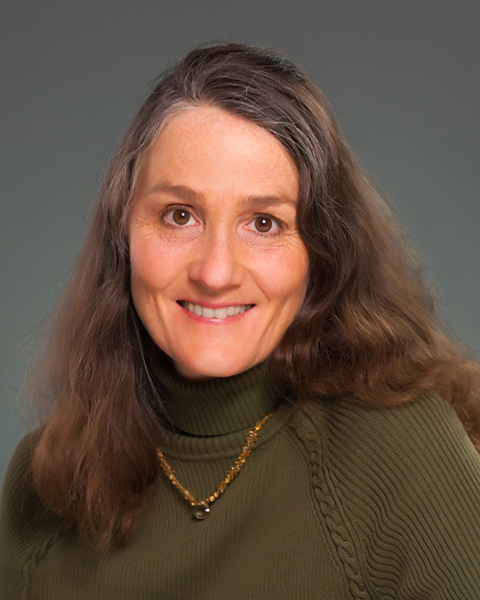Do we have a duty to ourselves and our children to be as free as possible from physical and emotional pain? Do you see ways that your child is in pain? Do you have pain?
Anxiety, shyness, aches, tension, fatigue, hypersensitivities, headaches, frustration, and lack of confidence can all be physically or emotionally painful. These physical and emotional pains may be coming from the same source—a compromised neuro-sensory-motor system (NSM system). When the NSM system is underdeveloped, it can leave us unable to focus, and stuck in fight-or-flight—an uncomfortable state of irritability, and hyper-vigilance.
An underdeveloped NSM system can also cause tension, tightness, weak muscles, upset, hyper-sensitivities, or an inability to communicate and connect with others—any of these can lead to physical and emotional pain.
Could it be that, when children are combative, the underlying cause is really pain?
Pain can be a blessing when it is a wake-up call to do something different. Pain is a signal to guide us to where help is needed. And it can be life-changing when we take action and find new ways of being.
Whether it is physical or emotional pain, by doing specific, targeted movements from the Brain and Sensory Foundations course, the NSM system becomes calmer and more mature. Directly transforming the nervous system makes all the difference.Ther are simple rhythmic movements and help for retained primitive reflexes that can lift pain and increase joy for you and those you care for.
How can rhythmic movements and reflex integration work for both physical and emotional pain?
The answer lies in the intersection between the brain, nerves, and sensory-motor systems.
I have personally seen the tools taught in the Brain and Sensory Foundations First Level course appear to work wonders to turn around pain for children and adults. We have hundreds of case studies from our students that confirm and support the far-reaching transformations these tools bring.
Here is an example:
"I have had plantar fasciitis for a few years now on my right foot only. It would come and go and I was treating it with standard stretching of my calf muscle, massaging and stretching my plantar tendon. Both of these would help to a certain extent but this last time it returned, those efforts did not seem to help. I was re-doing level 1 [of the Brain and Sensory Foundation course] and decided to try the plantar integration techniques. It was better after day 1 and the pain was entirely gone after day 3 of doing the isometric movements morning and night. Now I only do it once a day and sometimes I forget and it still has not returned. Nice!!" Rosanne Papadopoulos, occupational therapist
While we cannot promise a certain result for any given individual or condition, we can try these neurodevelopmental movements and see if they are helpful. I have heard so many success stories over the years that I always say, “It is worth a try!” Check out this mother's amazing story about pain relief using primitive reflex integration.
- There is the child who suffered trauma and neglect, who can now
connect with his adoptive parents - There is the young law student who is finding freedom from her
intense anxiety and ADHD symptoms - A young woman with social anxiety can now speak easily and
make friends for the first time - And so many children have found calm and relief from painful
sensory issues
Here are more examples to enjoy:
This mom was concerned about her daughter's developmental delay, neck pain and headaches, moodiness, and potty training. Read the full case study to see how neurodevelopmental movements quickly helped resolve her headaches and neck pain, as well as address several other issues.
Daily headaches after preschool had this 4-year-old's mother worried. After using tools from the Brain and Sensory Foundations course, his mother helped him resolve his headaches. The full case study describes how these tools also addressed his social-emotional regulation, sleep issues, anxiety, and fine-motor skills.
After two weeks of rhythmic movements and primitive reflex integration, this mom saw improvements in her son's posture. Find out how, after a month of neurodevelopmental movements, his writing was more legible, his reading had improved, and he was no longer experiencing hand pain when writing.
Disruptive behavior, anxiety, and an inability to pay attention—suspected as a result of physical trauma—made it difficult for this little boy to navigate a classroom environment. Read how after three months of rhythmic movements and primitive reflex integration, he is a much calmer and happier child, and able to enjoy school.
With neurodevelopmental movements, you may be able to do more than you ever thought possible to help children and adults with pain and other challenges. If you are not already enrolled, now is the time to benefit from the unique tools in the Brain and Sensory Foundations course.
Sonia Story, MS has been teaching neurodevelopmental movements since 2006.
She is an honors graduate with a Bachelor's degree in biology/psychology and a Master’s degree in Movement Sciences.
Sonia developed the Brain and Sensory Foundations program to provide comprehensive training in neurodevelopmental movements—combining innate rhythmic movements, play, primitive reflexes, and postural reflexes.
She is the author of The Importance of Reflex Integration and the Evidence eBook, giving the rationale and evidence basis for using neurodevelopmental movements for helping with challenges such as ADHD, Sensory Processing Disorders, anxiety, emotional dysregulation, visual skill deficits, poor social skills, gross and fine motor delays and other neurodevelopmental and behavioral disorders.
Her work is featured in numerous podcasts, summits, and conferences, and in the books Almost Autism: Recovering Children from Sensory Processing Disorder; Special Ed Mom Survival Guide; Family Health Revolution; and Same Journey, Different Paths—Stories of Auditory Processing Disorder.
Sonia’s mission is to help children and families experience the profound benefits of neurodevelopmental and integrative movements for more functional and fulfilling lives.






